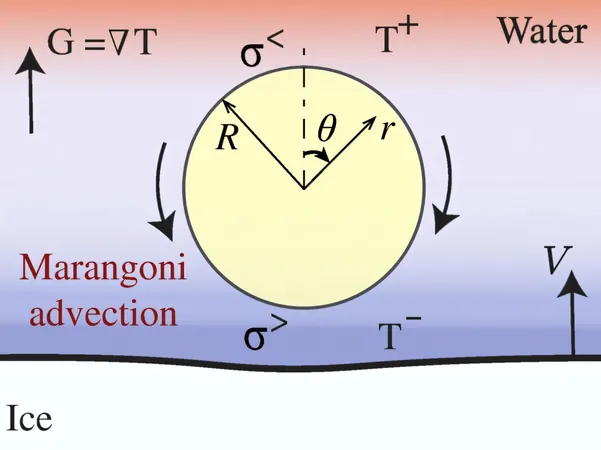
Tiny Droplets Are Revolutionizing Ice Formation: Breakthrough Research Could Transform Cryopreservation and Food Engineering!
2024-11-25
Author: Rajesh
Recent Discoveries
Recent discoveries from researchers at the University of Twente are shaking up our understanding of ice formation and could pave the way for revolutionary applications in cryopreservation and food engineering. It's long been accepted that when water freezes, it forms in predictable layers, creating a solid block. But what occurs when tiny droplets collide with this freezing front? The answer is both astonishing and game-changing.
The Science Behind the Surprise: How Droplets Change the Game
In a groundbreaking study published in the esteemed journal *Physical Review Letters*, scientists explored this fascinating phenomenon. They discovered that tiny droplets can significantly deform the freezing front in ways previously not understood. This revelation challenges conventional beliefs and suggests a deeper complexity regarding how freezing processes interact with different materials.
Researchers were aware that solid particles, such as dust, could disrupt the formation of ice based on their heat conduction properties. However, the new findings spotlight how droplets behave differently. The research team identified that interactions between a freezing front and a droplet involve intricate forces commonly referred to as thermal Marangoni forces. In layman's terms, this relates to how the surface tension of a droplet changes with temperature.
As the freezing front approaches a droplet, a temperature differential arises—one side of the droplet is at a different temperature than the other. This difference in temperature leads to a difference in surface tension, which in turn produces a force that causes liquid flow both inside and outside the droplet. Surprisingly, this flow draws warmer water towards the freezing front, resulting in the ice bending away from the droplet.
Potential Game-Changing Applications
The implications of this discovery are vast and can significantly impact various fields. Most notably, the findings present exciting new avenues in cryopreservation, where controlling ice formation is crucial for preserving biological samples, cells, and organs. Furthermore, in food engineering, understanding how droplets interact with freezing fronts could enhance methods for freezing food products to maintain texture and flavor.
As researcher Detlef Lohse aptly puts it, "Our findings allow us to control whether particles are incorporated into the material or pushed away as it solidifies." This newfound understanding could lead to leaps forward in technology and methodologies used in critical industries.
Conclusion
Color your expectations set for the future—this is just the beginning of what may soon become a transformative approach in ice manipulation across multiple sectors! Stay tuned for more updates on how these microscopic interactions can lead to macroscopic innovations!



 Brasil (PT)
Brasil (PT)
 Canada (EN)
Canada (EN)
 Chile (ES)
Chile (ES)
 España (ES)
España (ES)
 France (FR)
France (FR)
 Hong Kong (EN)
Hong Kong (EN)
 Italia (IT)
Italia (IT)
 日本 (JA)
日本 (JA)
 Magyarország (HU)
Magyarország (HU)
 Norge (NO)
Norge (NO)
 Polska (PL)
Polska (PL)
 Schweiz (DE)
Schweiz (DE)
 Singapore (EN)
Singapore (EN)
 Sverige (SV)
Sverige (SV)
 Suomi (FI)
Suomi (FI)
 Türkiye (TR)
Türkiye (TR)